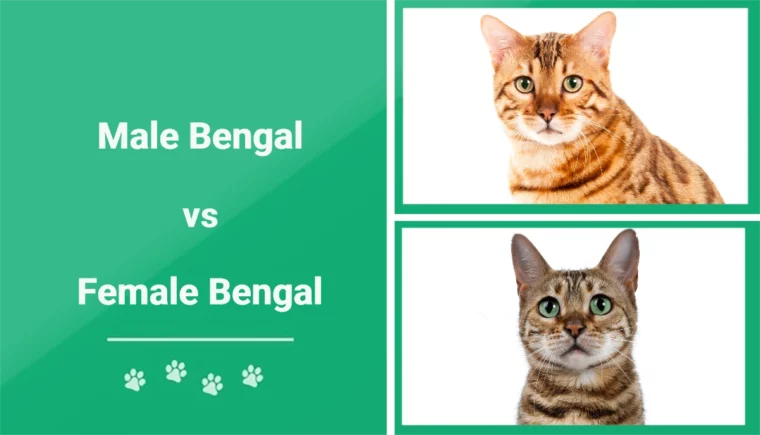
Bengal cats make fantastic pets for cat lovers, and it’s clear to see why. They have a unique appearance and appear to be a ‘wild’ form of a cat because of coloration and body type. Bengals are affectionate and loving cats that are very social and enjoy interacting with their owners.
Most Bengal cat owners will describe their cats as energetic, athletic, intelligent, and agile, which are desirable traits. Their overall bodily coloration consists of shady brown circles and patches with a tiger appearance.
If you are interested in learning more about this fascinating cat breed and which sex may be best for you, we have all the information you need in this article.
Visual Differences

At a Glance
Bengal Cats 101
Bengal cats are one of the most agile and athletic cat breeds you can own. They have a slender body and lack the fluffy and stocky appearance other house cat breeds have. Their build makes them better climbers and faster runners in comparison, and you will need to keep Bengals in an environment that can accommodate their needs. Their diet is simple and similar to other breeds of cats, but they will require a diet slightly higher in protein, fiber, and fat since they are so energetic.
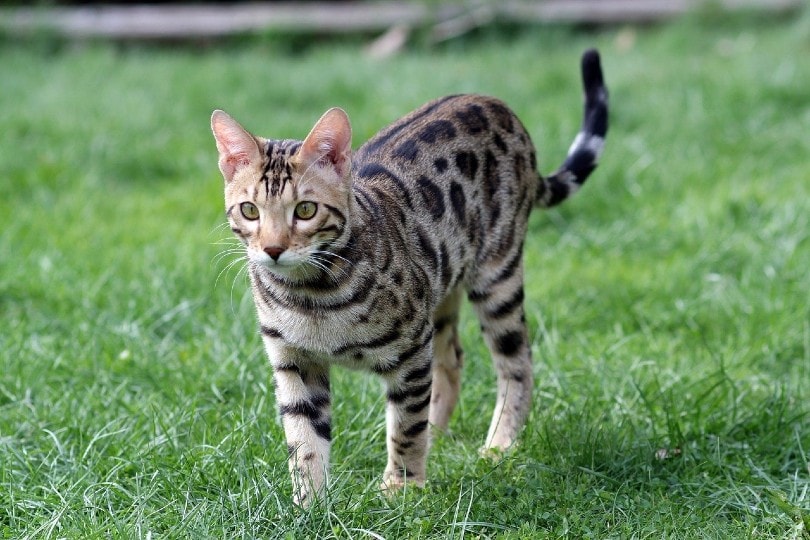
Bengal kittens are the most energetic during this life stage and they enjoy playing with lots of different interacting toys and running around. As Bengals get older, they will take longer daytime naps and prefer to explore their environment. Both kitten and adult Bengals are simple in terms of care; they require a high-quality diet, enrichment to help them relieve boredom, a place to potty, and time out of their human’s day for love and interaction.
Bengals will be fully grown after two years and reach an adult size larger than most other cat breeds. However, their size is due to their length, as this cat breed is tall and lithe. Their lack of long fur can make them appear taller than your average house cat, as their coat is short and lacks fluffiness. Bengals can live for around 10 to 18 years of age, and their lifespan will depend on their health status and the level of care they receive.
Male Pet Breed Overview
Personality / Character
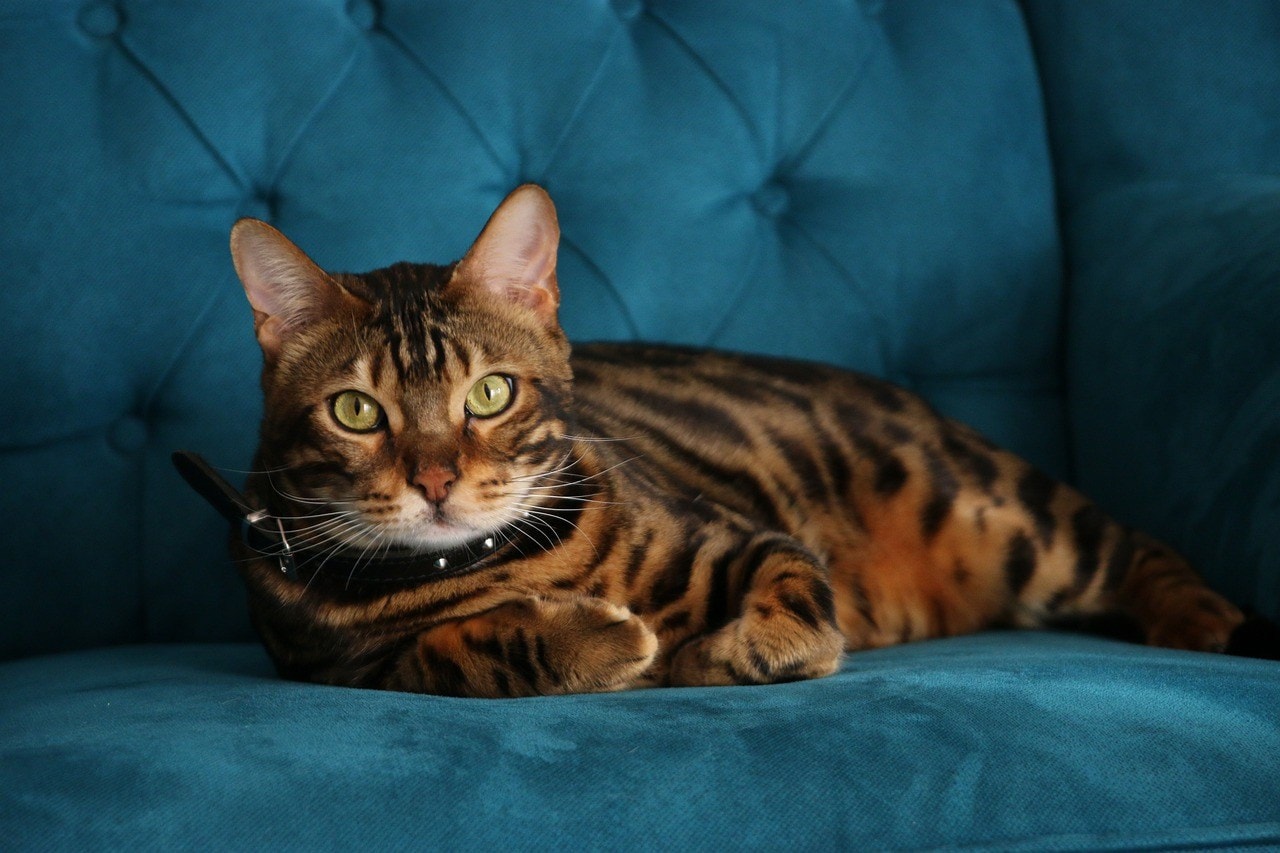
Male Bengal cats are highly intelligent and have a good indication of what’s going on around them. Males can be independent if they have not been socialized with humans and other animals from a young age. However, they generally make good pets for seniors and households with children as they are rarely aggressive and will rather run away than show any signs of aggression.
They are particularly vocal about feeding time because male Bengal cats have a fascination with food, and feeding time will become their favorite time of the day.
Training
You can train male Bengal cats on a leash, and training will require patience and determination. They are fairly easy to train and seem to figure out where they should do their business (whether a litter box or outdoors), and they also respond well to clicker training.
If you decide to train your male Bengal cat on a leash, it should fit them securely while remaining comfortable. They will be easier to train in a calm and quiet environment with minimal noise and activity disturbances. After your Bengal has gotten used to using a leash, you can start taking them on short walks where no dogs are around.

Health & Care
Like all cats, male Bengals are susceptible to both bacterial and viral infections. This can range from panleukopenia, calicivirus, rabies, and rhinotracheitis. Fortunately, you can prevent most of these infections through vaccinations. Hereditary health issues are common amongst both male and female Bengal cats.
Some minor health problems you may notice are cataracts that can develop naturally during old age or at a young age if it is hereditary. Hypertrophic cardiomyopathy (HCM) is another concern. Bengals can develop this condition if their parents carry the conditions.
If you do not neuter your male Bengal, they will likely try to escape to wander the streets for a receptive female cat as a mate. Neutering can also help prevent them from spreading FIV and FELV to other female cats while lowering their risk of urine spraying.
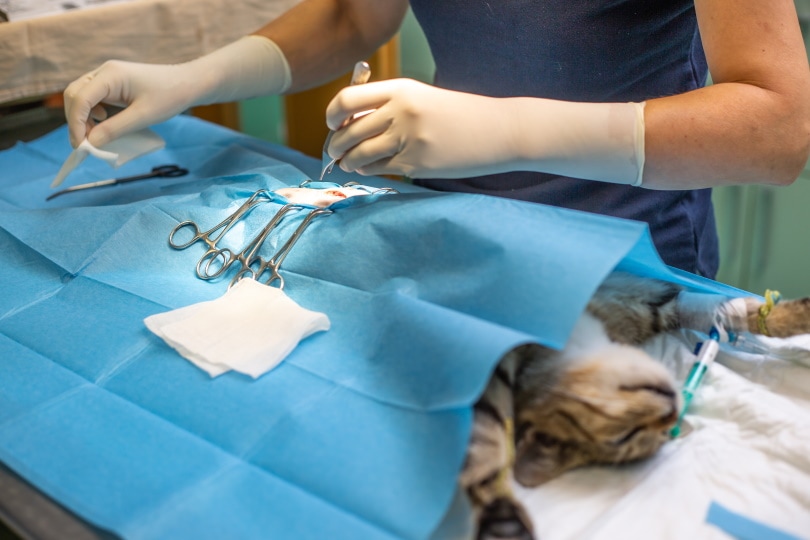
Breeding
It is best to consider adopting another Bengal cat rather than breeding them. It is not recommended to breed your male Bengal for profits. Breeding cats require expert skill and knowledge, and professional breeders will spend more money ensuring that the parent cats, pregnant females, and kittens are healthy than they will make.
The male Bengal cat plays a small role in the successful breeding process and should be chosen for their health to be a breeding cat. You can the help of a veterinarian who will run various tests on your cat to see if they are healthy enough to be bred and do not carry any hereditary conditions that could be passed to the kittens.
Female Bengal Cat Overview
Personality / Character
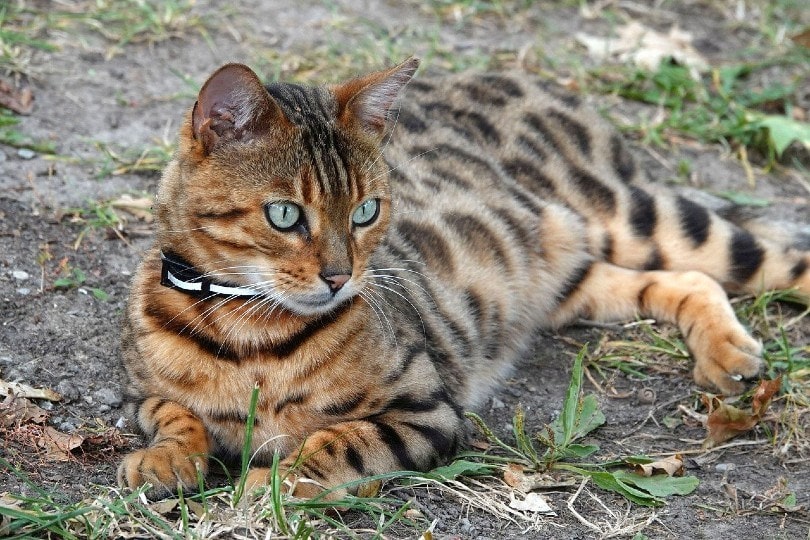
Female Bengal cats have similar personality traits as males do. They are active, social, and exceptionally playful. Female cats are less independent than males, making it easier to socialize with them. Female Bengals will typically have a stockier appearance around their stomach with a shorter neck and legs; however, this difference is barely visible unless you compare a female and male Bengal side by side.
Female Bengal cats may also be a better option for households with small children as females have a natural maternal side that can make them gentler around children. However, children should still be properly introduced to new cats in the household.
Training
Just like their male counterparts, female Bengal cats are easy to train. You can easily litter box train your female Bengal by placing their poop and urine into the box. After you have done this a few times, they will start to learn where they should and should not be using the bathroom.
Female Bengal’s can also be taught how to walk on a leash so that they can release some of their energy by going on a walk. You may find it beneficial to train your female Bengal with treats as a form of positive reinforcement. So if they do a certain task or trick correctly, then you can give them a treat so they can associate the treat as a reward.
- Related Read: How Big Do Bengal Cats Get? (Size + Growth Chart)
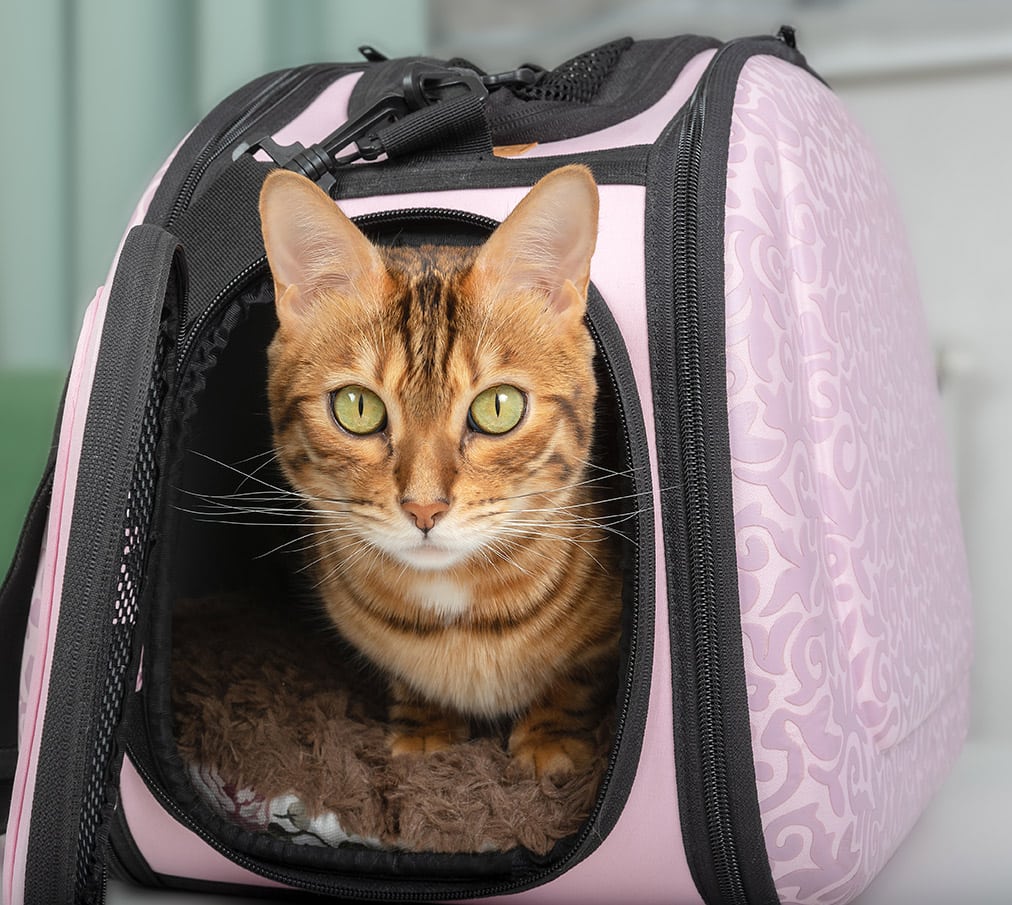
Health & Care
Female Bengal cats are prone to more health issues than males, mainly if they are not spayed or used as breeding cats. An unspayed female Bengal cat is prone to several different health conditions, namely ovarian cancer, ovarian cysts, and uterine infections.
Unspayed females may also have a different personality due to their hormones, and this is most noticeable when they are in heat (monthly cycle). They may spray urine, become vocal and restless during this time, and even try to wander out of your property in search of a male cat.
Breeding
If you are not a professional breeder and cannot work closely with an experienced veterinarian to monitor the health of your breeding female and her kittens, then it is best not to breed them. Breeding your female Bengal cat puts a lot of strain on their body, especially if you plan to breed her multiple times.
Most female Bengal cats can be bred from two years of age when their body is mature enough to handle a safe pregnancy. Breeding should stop when they are 6 years old, as they will become too old to breed successfully, putting your kittens and breeding females at risk.
Your breeding female should undergo various tests before and after the breeding process to ensure that they are in good health and that there is a low risk of a miscarriage occurring.
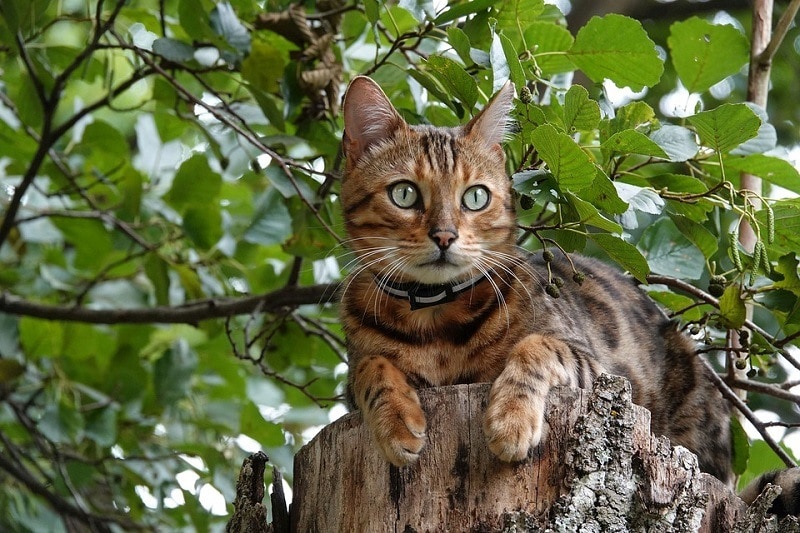
Which Gender Is Right for You?
The final gender of Bengal cat you choose mainly depends on your personal preference in terms of their health, behavior, and physical features. There is no better or preferred sex, and each cat has their own personality traits that they carry regardless of whether they are male or female.
Consider the pros and cons of each gender that we have mentioned in this article to help you make an informed decision as to which sex of Bengal cat appeals more to you.
See also:
- Can a Bengal Cat Purr? Is It Common Behavior?
- How Big Do Bengal Cats Get? Vet Reviewed Average Weight & Growth Chart
Featured Image Credit: Top – Martin Carlsson, Shutterstock | Bottom – Nynke van Holten, Shutterstock








